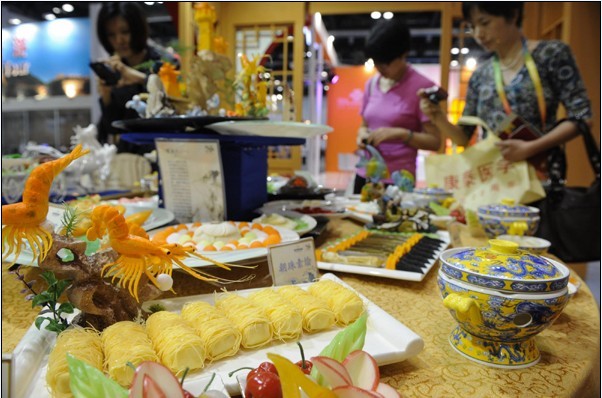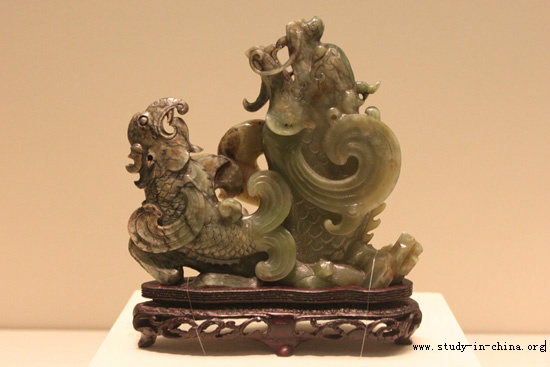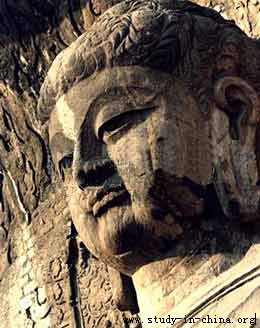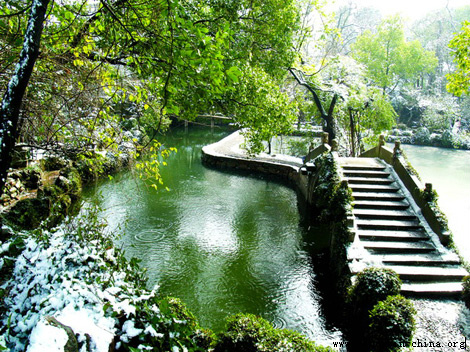| Home > China Feature |
Chinese Dragon Dance
One of the highlights of the Chinese New Year celebration is the spectacular Dragon Dance. It's history goes back to the Han Dynasty in ancient China. The Chinese have always perceived the dragon as being sacred and possessing power, courage, righteousness, dignity, fertility, wisdom, and auspiciousness.
Chinese New Year festivities celebrate the outset of the planting season in China. The dragon represents rain and good fortune, elements crucial for the agricultural crops. This mythical beast takes the physical form of many animals; it has the horns of a stag, the ears of a bull, the eyes of a rabbit, the claws of a tiger, and the scales of a fish distributed along the body of a long serpent. It was believed these combined traits allowed the creature to walk on land, fly through the heavens, and swim through the waters. These powers gives the dragon the authority to rule the clouds and to control the rain.
The Dragon Dance requires the coordinated efforts of a team of dancers who come from martial arts groups. The dragon consists of a head mask and a lengthy body which is held up with poles and transported by the dancers. The lead dancer holding the dragon's head has an extremely important job. He or she makes the dragon twist, leap, crouch, and dip, as sinuous as a snake.
The dragon mask itself, usually colored red, green, or gold, is gorgeous and very complex in design. Sometimes the head has animation and pyrotechnics that belch smoke. The number of body sections can vary, sometimes using as many as 25 sections divided by hoops of bamboo. The longer the dragon, the more good fortune.
The dragon is difficult to manipulate and requires well-trained dancers in top physical condition. The creature moves in precise patterns to the music provided by drums, cymbals, and a gong. Onlookers throw firecrackers at the dancing dragon's feet to scare away any evil spirits and also to assure the beast is fully awake from its hibernation.
The color green on the dragon stands for an extraordinary harvest, yellow is for the solemn empire, prosperity is represented by gold or silver, red is excitement, and the dragon's scales and tail are a shimmering silver symbolizing joy.
At times, at larger celebrations, a spectator might see a Double Dragon Dance where two groups of dancers intertwine their dragons in intricate patterns. A truly rare performance involves nine dragons because nine is a perfect number. However, such performances necessitate the coordinated efforts of several dance troupe.
Hopefully, visitors to Chinatown will have the opportunity to observe the breathtaking, astounding Dragon Dance.
Art
 more
moreChina Beijing International Diet ...
Recently, The hit CCTV documentary, A Bite of China, shown at 10:40 ...

Exhibition of Ancient Chinese Jad...
At least 8,000 years ago, Chinese ancestors discovered a beautiful...

Longmen Grottoes
The Longmen Grottoes, located near Luoyang, Henan Province, are a tr...

Custom
 more
moreWeb Dictionary
Martial Arts
Tai Chi Master Class Held in Moscow
MOSCOW, June 15, 2016 (Xinhua) -- Students learn from Shaolin ...
Celebriting 70 years' efforts in restoring Mogao...
Work is being carried out at the restoration site of cave No 98 a...
Hong Kong Children's Symphony performs in Seattle
Under the theme of Tribute to the Golden Age, a concert featuring a ...





 print
print  email
email  Favorite
Favorite  Transtlate
Transtlate 








